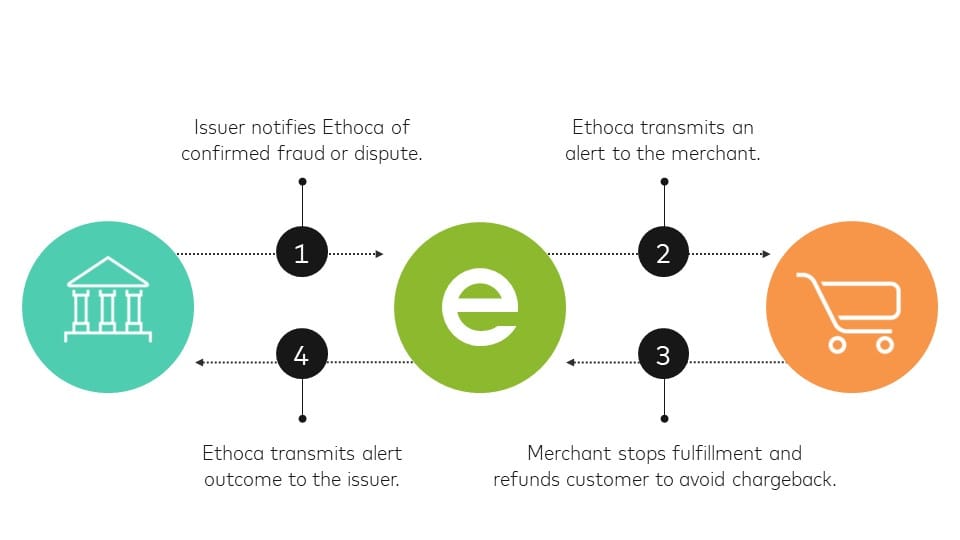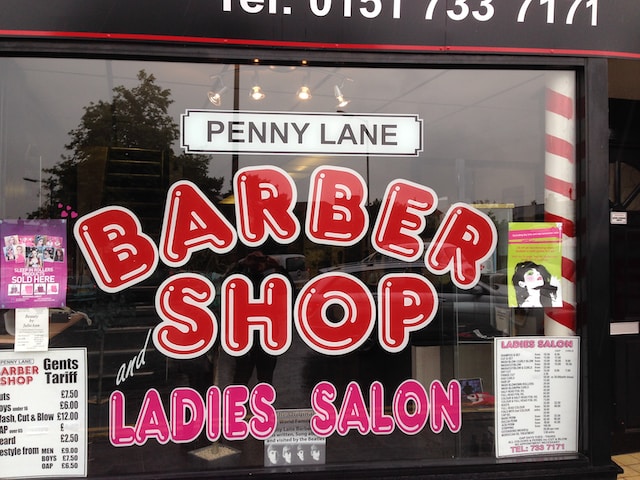
SuperPay helps barbers like yourself get paid as quickly as possible. Choose our platform to power your payments & billing.
Barber shops are more than just places to get a haircut; they are community hubs where people gather, share stories, and build relationships. In today's fast-paced world, it's essential for barber shops to stay organized, efficient, and connected to meet the needs of their clients. This is where collaboration tools come in.
Collaboration tools are software applications that enable teams to work together, streamline processes, and enhance communication. While collaboration tools are commonly associated with office environments, they can also be incredibly beneficial for barber shops. From appointment scheduling to inventory management, these tools can revolutionize the way barber shops operate.
In this blog post, we will explore the need for collaboration tools in barber shops and discuss different types of tools that can be used. We will also delve into the process of selecting the right tools for your specific barber shop needs. Moreover, we will provide insights on how to implement and use these tools effectively, including training staff, integrating them into daily operations, and measuring success.
To bring these ideas to life, we will also showcase real-life case studies of barber shops that have successfully utilized collaboration tools. By the end of this post, you will have a comprehensive understanding of the benefits of collaboration tools and how they can drive the future success of your barber shop.
So, whether you're a barber shop owner looking to streamline operations or a barber looking to enhance your productivity, this blog post will equip you with the knowledge and tools you need to take your barber shop to the next level. Let's dive in and explore the world of collaboration tools for barber shops!
Understanding the Need for Collaboration Tools in Barber Shops
Barber shops are vibrant, bustling establishments that require a high level of organization and efficient management to provide top-notch services to their clients. However, traditional methods of pen and paper, phone calls, and spreadsheets can be time-consuming, error-prone, and limit the potential for growth. This is where collaboration tools come into play.
Enhancing Communication: Effective communication is paramount in any business, and barber shops are no exception. Collaboration tools provide a centralized platform for seamless and instant communication among barbers, receptionists, and other staff members. Whether it's discussing appointment details, requesting supplies, or sharing important updates, these tools ensure that everyone is on the same page.
Streamlining Appointment Scheduling: Managing appointments is a critical aspect of running a barber shop. Collaboration tools designed specifically for appointment scheduling can optimize this process by allowing clients to book appointments online, reducing the need for phone calls and manual scheduling. Additionally, these tools can send automated reminders to clients, minimize double bookings, and provide real-time visibility of the barber shop's schedule.
Efficient Inventory Management: Keeping track of supplies, such as shampoos, conditioners, styling products, and tools, is essential for a smooth operation. Collaboration tools with inventory management features enable barbershops to track stock levels, automate reordering processes, and generate reports for better inventory control. This ensures that the shop never runs out of essential items and can provide a seamless experience for clients.
Customer Relationship Management: Building strong relationships with clients is crucial for the long-term success of a barber shop. Collaboration tools with customer relationship management (CRM) capabilities can store client information, track their preferences, and maintain records of past services. With this data, barbers can personalize the client experience, anticipate their needs, and offer tailored recommendations during future visits.
Promoting Teamwork and Collaboration: Collaboration tools can foster a sense of teamwork and collaboration among the staff members of a barber shop. These tools provide a platform for sharing ideas, discussing techniques, and seeking advice from colleagues. By encouraging collaboration, barbers can continuously learn and improve their skills, resulting in better service quality for clients.
Improving Efficiency and Productivity: By automating manual processes and centralizing information, collaboration tools eliminate time-consuming tasks and reduce the chances of errors. This allows barbers to focus more on providing high-quality services to clients and less on administrative work. Ultimately, these tools can boost overall efficiency and productivity in the barber shop.
Enhancing the Client Experience: Collaboration tools play a significant role in enhancing the overall client experience. From seamless appointment booking processes to personalized service recommendations, these tools enable barbers to provide a smooth and tailored experience for each client. This, in turn, leads to increased client satisfaction, positive reviews, and ultimately, customer loyalty.
In conclusion, collaboration tools are not just for office environments; they have immense value in the barber shop industry. From improving communication and streamlining appointment scheduling to optimizing inventory management and enhancing the client experience, these tools revolutionize the way barber shops operate. By embracing collaboration tools, barber shops can stay ahead of the competition, deliver exceptional service, and build lasting relationships with their clients.
Exploring Different Types of Collaboration Tools for Barber Shops
When it comes to collaboration tools for barber shops, there are various options available that cater to specific needs and requirements. In this section, we will explore different types of collaboration tools that can revolutionize the way barber shops operate, from appointment scheduling to inventory management and customer relationship management.
Appointment Scheduling Tools
Online Booking Platforms: These tools allow clients to book appointments conveniently through a website or mobile app. They provide real-time availability, automated reminders, and the ability to manage appointments from any device.
Calendar Integration: Collaboration tools that integrate with popular calendar applications, such as Google Calendar or Microsoft Outlook, streamline the process of scheduling appointments. Barbers can easily view and manage their schedules, avoiding conflicts and double bookings.
Automated Reminder Systems: Tools that send automated reminders via email, SMS, or push notifications help reduce no-shows and keep clients informed about their upcoming appointments.
Communication Tools
Instant Messaging Platforms: These tools enable real-time communication among barbers, receptionists, and other staff members. Features like group chats, file sharing, and video calls enhance collaboration and streamline communication within the barber shop.
Email Service Providers: Utilizing professional email service providers ensures efficient and effective communication with clients, suppliers, and other stakeholders. These tools offer features like email templates, scheduling, and tracking for improved communication management.
Task Management Platforms: Task management tools help in assigning, tracking, and organizing tasks within the barber shop. They allow barbers and staff members to collaborate on projects, set deadlines, and monitor progress, ensuring smooth operations.
Inventory Management Tools
Inventory Tracking Systems: These tools help barber shops keep track of their inventory, including hair products, tools, and other supplies. They provide real-time updates on stock levels, automate reordering processes, and generate reports for better inventory control.
Barcode Scanning Software: By utilizing barcode scanning software, barbershops can streamline inventory management. This tool allows easy tracking and identification of products, reducing errors and saving time during stock checks.
Supplier Management Platforms: Supplier management tools simplify the process of managing relationships with suppliers. They provide features like order tracking, supplier communication, and performance evaluation to ensure timely and efficient supply chain management.
Customer Relationship Management Tools
CRM Software: CRM tools help barber shops manage client information, track preferences, and maintain records of past services. These tools enable personalized service recommendations, targeted marketing campaigns, and overall improved client relationship management.
Feedback and Review Platforms: Tools that facilitate collecting client feedback and online reviews help barber shops understand their clients' satisfaction levels and areas for improvement. This valuable feedback can guide the shop in enhancing the client experience and making necessary adjustments.
Loyalty Program Management Software: Loyalty program tools allow barber shops to implement and manage customer loyalty programs. These tools track points, offer rewards, and provide analytics to enhance customer loyalty and retention.
By exploring these different types of collaboration tools, barber shops can identify the specific tools that align with their needs and goals. Whether it's streamlining appointment scheduling, improving communication, managing inventory, or enhancing customer relationships, the right collaboration tools can transform the way barber shops operate and deliver exceptional services to their clients.

How to Choose the Right Collaboration Tools for Your Barber Shop
Choosing the right collaboration tools for your barber shop is a crucial decision that can significantly impact the efficiency and success of your business. In this section, we will discuss the key considerations and steps to help you make an informed decision when selecting collaboration tools for your barber shop.
Assessing Your Barber Shop's Needs
Identify Pain Points: Start by identifying the specific challenges and pain points in your barber shop's operations. Is it appointment scheduling, inventory management, or communication? Understanding these pain points will guide you in choosing the right collaboration tools to address them.
Define Objectives: Clearly define your goals and objectives for implementing collaboration tools. Do you want to streamline operations, improve customer service, or enhance team collaboration? Having specific objectives will help you evaluate the suitability of different tools.
Consider Scalability: Consider the scalability of the collaboration tools. Will they be able to accommodate your barber shop's growth and increasing demands in the future? Ensure that the tools can handle additional users, appointments, and inventory as your business expands.
Comparing Features and Pricing of Different Tools
Research and Shortlist: Conduct thorough research on different collaboration tools available in the market. Shortlist the ones that align with your identified needs and objectives.
Evaluate Features: Compare the features offered by each tool. Pay attention to appointment scheduling capabilities, communication features, inventory management functionalities, and customer relationship management capabilities. Look for tools that offer a comprehensive set of features that meet your specific requirements.
Consider Integration: Assess whether the collaboration tools can integrate seamlessly with your existing systems and software. Integration with your website, email service provider, or point-of-sale system can streamline operations and avoid duplication of efforts.
Pricing and Cost: Evaluate the pricing structure of each tool. Consider factors such as upfront costs, monthly subscription fees, and any additional charges for extra features or users. Ensure that the cost of the tool aligns with your budget and provides good value for the features offered.
Considering User-Friendliness and Support
User-Friendly Interface: Choose collaboration tools that have an intuitive and user-friendly interface. Complex and difficult-to-navigate tools may require extensive training and result in resistance from your staff. A user-friendly interface will facilitate quick adoption and efficient use of the tools.
Training and Support: Evaluate the training and support provided by the tool's provider. Look for resources such as documentation, tutorials, and customer support channels to assist you and your team in using the tools effectively. Good support is essential for a smooth implementation and troubleshooting any issues that may arise.
Seek Recommendations: Reach out to fellow barbers or industry professionals for recommendations on collaboration tools they have used and found effective. Their insights and experiences can provide valuable guidance in making the right choice.
By following these steps, you can choose collaboration tools that effectively address your barber shop's needs, align with your objectives, and provide a seamless user experience. Selecting the right tools will optimize your operations, improve customer satisfaction, and drive the success of your barber shop.
Implementing and Using Collaboration Tools in Your Barber Shop
Once you have chosen the collaboration tools that best suit your barber shop's needs, the next step is to implement and effectively use these tools in your daily operations. In this section, we will discuss the key steps to successfully implement and utilize collaboration tools in your barber shop.
Training Staff on Using the Tools
Provide Comprehensive Training: Ensure that all staff members receive comprehensive training on how to use the collaboration tools effectively. This can be done through in-person training sessions, video tutorials, or online resources provided by the tool's provider. Training should cover all key features and functionalities of the tools.
Encourage Hands-on Practice: Allow staff members to practice using the tools in a simulated environment. This hands-on practice will help them become familiar with the tools and gain confidence in utilizing them during actual operations.
Designate Team Leads: Designate team leads or superusers who are proficient in using the collaboration tools. These individuals can serve as mentors and provide ongoing guidance and support to their colleagues.
Integrating Tools into Daily Operations
Establish Standard Operating Procedures: Develop clear standard operating procedures (SOPs) that outline how the collaboration tools will be used in different aspects of your barber shop's operations. This includes appointment scheduling, inventory management, communication protocols, and customer relationship management. SOPs will ensure consistency and efficiency in using the tools.
Streamline Workflows: Identify areas where collaboration tools can streamline workflows and enhance efficiency. For example, integrate appointment scheduling tools with your website to enable seamless online booking or automate inventory reorder processes using inventory management tools. Continuously assess and optimize workflows to maximize the benefits of the collaboration tools.
Promote Tool Adoption: Encourage all staff members to embrace the collaboration tools and actively use them in their daily tasks. Emphasize the benefits and positive impact that the tools can have on their work efficiency and the overall success of the barber shop.
Measuring Success and Adjusting as Needed
Establish Key Performance Indicators (KPIs): Define KPIs to measure the effectiveness of the collaboration tools in achieving your barber shop's objectives. These KPIs can include metrics such as appointment booking rates, customer satisfaction ratings, inventory turnover, and team collaboration levels. Regularly monitor and analyze these metrics to assess the impact of the collaboration tools.
Collect Feedback: Continuously gather feedback from staff members and clients regarding their experience with the collaboration tools. This feedback can uncover areas for improvement and identify any challenges or issues that need to be addressed.
Adjust and Improve: Based on the feedback and KPI analysis, make necessary adjustments and improvements to optimize the use of collaboration tools. This may involve tweaking workflows, providing additional training, or even considering alternative tools if the current ones are not meeting expectations.
By implementing collaboration tools effectively, integrating them into daily operations, and continuously evaluating their impact, you can harness the full potential of these tools to enhance productivity, streamline processes, and provide exceptional services in your barber shop. Remember that successful implementation requires ongoing commitment, support, and adaptability to drive continuous improvement.
Case Studies: Successful Use of Collaboration Tools in Barber Shops
In this section, we will explore real-life case studies of barber shops that have successfully implemented collaboration tools in their operations. These case studies will provide insights into how collaboration tools have transformed their businesses and the specific benefits they have experienced.
Case Study 1: "The Cut Above Barber Shop"
Background: The Cut Above Barber Shop is a busy establishment located in the heart of a bustling city. They faced challenges with appointment scheduling, communication, and inventory management, which led to inefficiencies and customer dissatisfaction.
Solution: The barber shop implemented an online booking platform that allowed clients to schedule appointments conveniently through their website or mobile app. They also integrated an instant messaging platform to streamline communication among barbers and receptionists. Additionally, they adopted an inventory management tool to track stock levels and automate reordering processes.
Results: The implementation of collaboration tools resulted in significant improvements for The Cut Above Barber Shop. Appointment scheduling became seamless, reducing no-shows and improving customer satisfaction. The instant messaging platform enhanced communication, leading to better coordination between staff members and faster response times to client inquiries. The inventory management tool ensured that the shop never ran out of essential supplies, resulting in smooth operations and increased revenue.
Case Study 2: "Style & Co."
Background: Style & Co. is a high-end barber shop catering to a discerning clientele. They faced challenges with customer relationship management and personalized service recommendations.
Solution: Style & Co. implemented a customer relationship management (CRM) software that allowed them to store client information, track preferences, and maintain records of past services. They also utilized feedback and review platforms to collect client feedback and online reviews, enabling them to understand client satisfaction levels and make necessary improvements. Additionally, they implemented a loyalty program management software to reward and retain their loyal customers.
Results: The implementation of collaboration tools had a positive impact on Style & Co. By utilizing the CRM software, they were able to provide personalized service recommendations based on client preferences, leading to an enhanced client experience and increased satisfaction. The feedback and review platforms helped them gather valuable insights and make necessary adjustments to improve their services. The loyalty program management software fostered customer loyalty, resulting in repeat business and referrals.
These case studies demonstrate how collaboration tools can address specific challenges and deliver tangible benefits to barber shops. By leveraging the right tools, barber shops can streamline operations, enhance communication, improve customer relationships, and ultimately achieve greater success.
Incorporating collaboration tools into your barber shop can have a similar positive impact, transforming the way you operate and interact with clients. By learning from these case studies, you can gain valuable insights and inspiration for implementing collaboration tools in your own barber shop.
Conclusion
Collaboration tools have become indispensable in the modern business landscape, and barber shops are no exception. In this blog post, we have explored the need for collaboration tools in barber shops and delved into different types of tools that can revolutionize their operations.
We discussed the importance of choosing the right collaboration tools for your barber shop by assessing your specific needs, comparing features and pricing, and considering user-friendliness and support. We also explored the steps to implement and effectively use collaboration tools, including training staff, integrating tools into daily operations, and measuring success.
Furthermore, we examined real-life case studies of barber shops that have successfully implemented collaboration tools, showcasing the positive impact these tools can have on appointment scheduling, communication, inventory management, customer relationship management, and overall business success.
As the barber shop industry continues to evolve, collaboration tools will play an increasingly vital role in enhancing efficiency, improving customer satisfaction, and driving growth. By embracing collaboration tools, barber shops can stay ahead of the competition, deliver exceptional services, and build long-lasting relationships with their clients.
In conclusion, collaboration tools offer a wide range of benefits for barber shops, from streamlining operations to enhancing communication and improving customer relationships. By understanding the unique needs of your barber shop, carefully selecting the right tools, effectively implementing them, and continuously evaluating their impact, you can unlock the full potential of collaboration tools and position your barber shop for long-term success.
So, whether you're a seasoned barber shop owner or a barber looking to take your skills to the next level, now is the time to embrace collaboration tools and elevate your barber shop experience. Embrace the power of collaboration tools and watch your barber shop thrive in the ever-evolving industry.


